Record of aquatic invertebrates associated with the bromeliads Aechmea ornata (Baker) and Aechmea recurvata (Klotzsch) L. B. Sm in two Atlantic Rainforest fragments of south Brazil
Registro de invertebrados aquáticos associados às bromélias Aechmea ornata (Baker) e Aechmea recurvata (Klotzsch) L. B. Sm em dois fragmentos de Mata Atlântica do sul do Brasil
Yuri Kataoka Silva; Anderson de Souza Moser; Mônica Ceneviva-Bastos; Ana Lucia Suriani Affonso
Abstract
Keywords
Resumo
Resumo:: As bromélias são numerosas em diversidade e abundância na Mata Atlântica, um dos biomas mais ameaçados do planeta. Elas também são um habitat importante para várias espécies de animais que vivem na água retida por sua estrutura em roseta. Neste estudo, objetivamos caracterizar e comparar a comunidade de macroinvertebrados de duas espécies de bromélias de fragmentos de Mata Atlântica. Uma é característica de Floresta Ombrófila Densa, Aechmea ornata, e a outra ocorre em Floresta Ombrófila Mista, Aechmea recurvata. Amostramos e identificamos macroinvertebrados de 24 bromélias, 12 de cada espécie. No total foram registrados 19 táxons e 656 espécimes. No geral, Diptera foi a ordem de inseto mais abundante (n = 417), representada principalmente por culicídeos (n = 227) e quironomídeos (n = 107), seguidos por besouros Scirtidae (n = 216). Comparativamente a A. recurvata, A. ornata apresentou maior abundância e menor riqueza de invertebrados. Sete táxons foram exclusivos de A. recurvata, oito foram comuns a ambas e quatro, incluindo uma esponja, ocorreram apenas em A. ornata. Até onde sabemos, este é o primeiro registro de esponjas em bromélias. Observamos que os táxons de invertebrados mais abundantes eram comuns a ambas as bromélias e são considerados típicos de ambientes lênticos. Por outro lado, o elevado número de táxons exclusivos indica que os esforços de conservação devem incluir bromélias dessas duas fitofisionomias para garantir a diversidade das comunidades de fitotelmatas.
Palavras-chave
References
AMADEO, F.E., DIAS, J.D., SEGOVIA, B.T., SIMÕES, N.R. and LANSAC-TÔHA, F.A. Effects of bromeliad flowering event on the community structuring of aquatic insect larvae associated with phytotelmata of
BERG, M.B. Larval food and feeding behavior. In: P.D. ARMITAGE, P.S. CRANSTON and L.C.V. PINDER, eds.
CLARKE, K.R. and GORLEY, R.N.
FERRINGTON-JUNIOR, L.C. Global diversity of non-biting midges (Chironomidae; Insecta-Diptera) in freshwater.
FREITAS, L., SALINO, A., MENINI NETO, L., ALMEIDA, T.E., MORTARA, S.R., STEHMANN, J.R., AMORIM, A.M., GUIMARÃES, E.F., COELHO, M.N., ZANIN, A. and FORZZA, R.C. A comprehensive checklist of vascular epiphytes of the Atlantic Forest reveals outstanding endemic rates.
FUNDAÇÃO SOS MATA ATLÂNTICA. Instituto Nacional de Pesquisas Espaciais – INPE.
GORNI, G.R. and ALVES, R.G. Influência de variáveis ambientais sobre a comunidade de oligoquetos (Annelida: Clitellata) em um córrego neotropical.
HAUER, F.R. and RESH, V.H. Benthic macroinvertebrates. In: F.R. HAUER and G.A. LAMBERTI, eds.
KITCHING, R.L. Food webs in phytotelmata: “bottom-up” and “top-down” explanations for community structure.
MACIEL, F.O., ANDRADES-FILHO, C.O., HERRMANN, P.B. and REIS, M.S. COSTA, E.C. and PRINTES, R.C. Ambientes de ocorrência do porífero
MARTINELLI, G., VIEIRA, C.M., GONZALEZ, M., LEITMAN, P., PIRATININGA, A., COSTA, A.F. and FORZZA, R.C. Bromeliaceae da Mata Atlântica brasileira: lista de espécies, distribuição e conservação.
MESTRE, L.A.M., ARANHA, J.M.R. and ESPER, M.L.P. Macroinvertebrate fauna associated to the bromeliad
MUGNAI, R., NESSIMIAN, J.L. and BAPTISTA, D.F.
MYERS, N., MITTERMEYER, R.A., FONSECA, G.A.B. and KENT, J. Biodiversity hotspots for conservation priorities.
NEVES, K.M.S., TAVARES, A.R., VERCELLINO, S. and FERRAGUT, C. Biomass and abiotic variables change in phytotelmic environment in the tank-bromeliad
RICHARDSON, B.A. The bromeliad microcosm and the assessment of faunal diversity in a Neotropical Forest.
SAETHER, O.A., ANDERSEN, T., PINHO, L.C. and MENDES, H.F. The problems with
SODRÉ, V.M., ROCHA, O. and MESSIAS, M.C. Chironomid larvae inhabiting bromeliad phytotelmata in a fragment of the Atlantic Rainforest in Rio de Janeiro State.
TRIVINHO-STRIXINO, S.
VOLKMER-RIBEIRO, C. and PAROLIN, M. As esponjas. In: M. PAROLIN, C. VOLKMER-RIBEIRO and J.A. LEANDRINI, eds.
WILLIAMS, W.D., TAAFFE, R.G. and BOULTON, A.J. Longitudinal distribution of macroinvertebrates in two rivers subject to salinization.
Submitted date:
05/10/2021
Accepted date:
09/14/2021
Publication date:
10/15/2021

